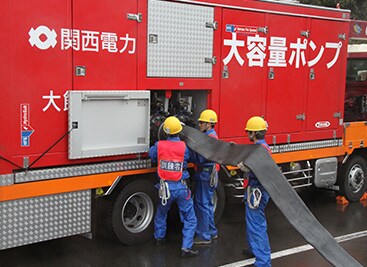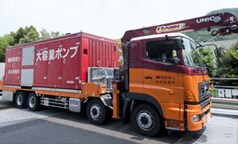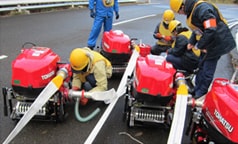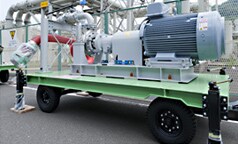Nuclear Power Information
To Secure Redundant Power Supply and Cooling Functions
 Installation of Redundant/Diversified Power Supply/Cooling Functions
Installation of Redundant/Diversified Power Supply/Cooling Functions
When a massive earthquake attacked Fukushima Daiichi Nuclear Power Station of Tokyo Electric Power, land slide occurred first, which resulted in the collapse of transmission line towers, leading to loss of offsite power.
In response to seismic motions, the reactors shut down in a normal state, and emergency diesel generators started up, which could cool the reactors safely. However, tsunamis, subsequently attacked the Power Station, caused flooding and unavailability of important electric components, including the diesel generators, which resulted in a loss of all power supplies, leading to the loss of reactor cooling functions.
Taking into account the lessons learned from the Fukushima Daiichi accident, we conducted investigation of the foundation surrounding transmission line towers, which provide off-site power, to confirm the safety.
In addition, in preparation for a loss of power supplied by diesel generators, we have deployed power supply cars and air-cooled emergency generators on the hills, which are robust against potential earthquakes and immune to the effects of potential tsunamis, in order to secure redundant/diversified power supplies.
We also perform emergency drills on a regular basis so that plant personnel will be able to use these power supply cars and generators to immediately feed electricity to necessary locations.
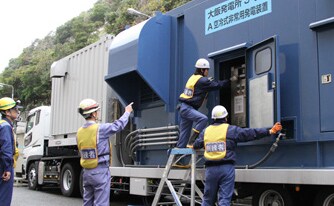
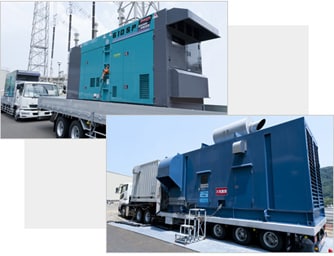
Keep Cooling the Reactors under any Circumstances
In order to keep cooling the reactor and the spent fuel pool, it is essential to assure pumps and water sources which provide cooling water besides power supply.
During the accident at Fukushima Daiichi Power Station of Tokyo Electric Power, all the important safety components and seawater pumps necessary for cooling the reactors were lost, which disabled continuous cooling of the reactors, resulted in core damage. A large amount of hydrogen, which generated in the course of accident development, caused hydrogen explosion.
In order to prevent the occurrence of a severe accident, like the Fukushima Daiichi accident, we have deployed redundant and diversified cooling functions, including fire service pumps and large capacity pumps so that sustained reactor cooling can be assured under any circumstances.
Besides the deployment of additional equipment, we have performed emergency drills repeatedly so that those involved will be able to take prompt actions in case of an emergency, including arrangement and operation of pumps as well as laying of hoses.
